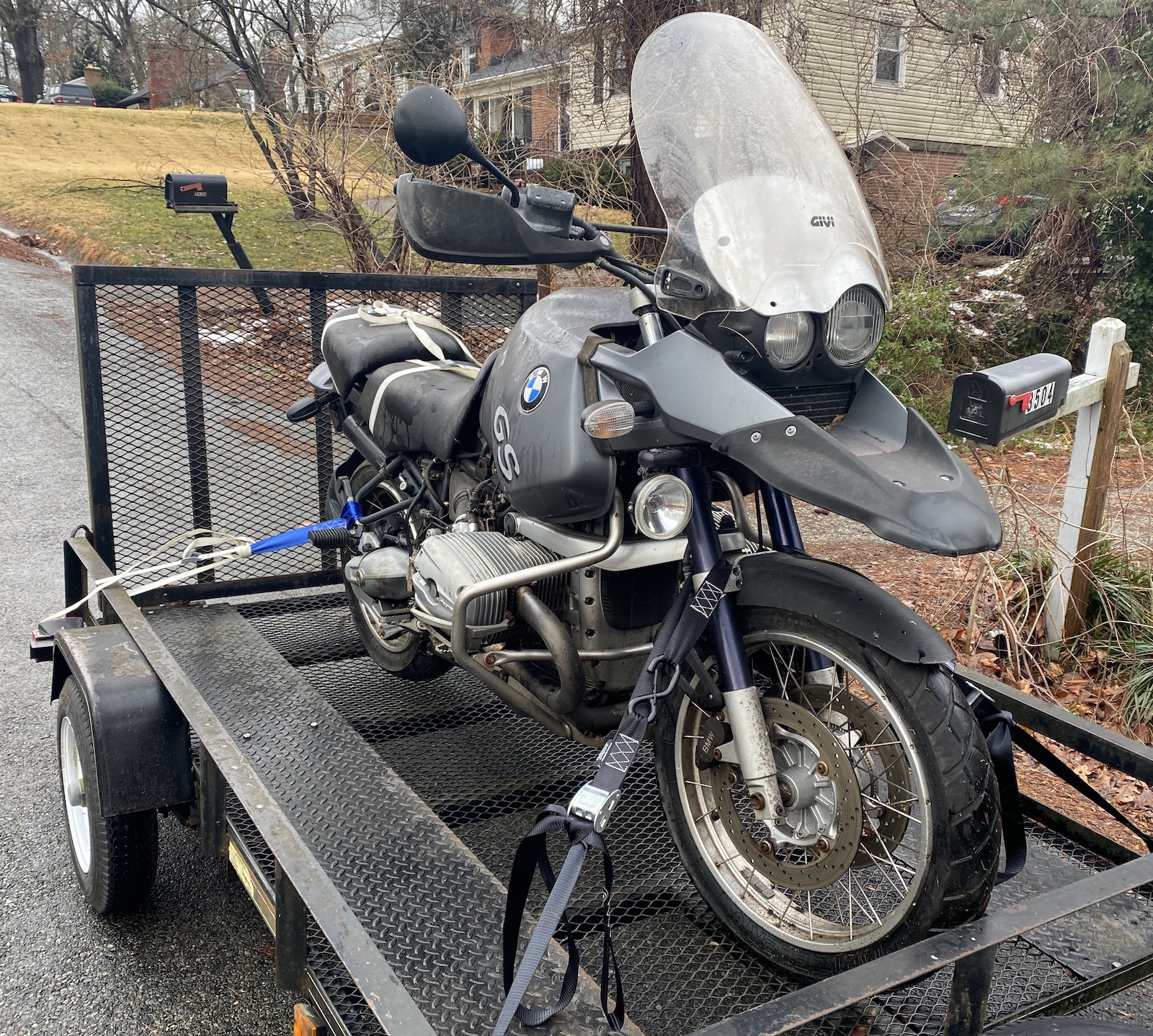Hot air
Some things seem uncanny. How can falling toast always land on its buttered side? I mean, that should only be a 50% probability, right? Yet it happens 100% of the time. I choose a mutual fund with a long history of declining value; surely that means it’s due to go up soon. If I flip an unbiased coin five times and get five heads, it’s gotta be much more likely to land tails-up on the next toss. There are only two possibilities in each case: The worth of my investment either goes up or down, and the coin either lands on heads or tails. I’ve got at least a 50% chance of being right. Given the unlikely preponderance on one side of the split, things just have to even out promptly. Yet my mutual fund continues to lose money and the coin lands on heads again—how can this keeping happening against all odds?! What are the chances of arriving at a one-lane bridge at exactly the same time as an oncoming vehicle when the two of you are the only ones on this road for miles? That ought to be like two gnats colliding in the Grand Canyon, and yet it happened—more than once! Were the odds somehow actually 100%?!
Of course not.
One of the factors here is how people commonly misunderstand statistics, odds and probability. We often misconstrue risk and generate feelings about outcomes based on erroneous notions. For example, if the weather forecast includes a 20% chance of rain, and then it rains, we can feel cheated, since sunshine was the much more likely prospect. Maybe we’d feel the same way—if we had time to feel anything—after losing a round of Russian roulette. After all, there was only one loaded chamber in the gun. Our odds of survival were 5:1! How could things go so terribly wrong with such good odds?

First of all, consequence severity is completely independent of the likelihood something might happen. Second, we get focused on the big number as though the little number doesn’t also exist. Third, just because there are only two possibilities, they don’t have to be equally likely. A losing mutual fund may continue losing because it reflects a market segment in long-term decline, and a piece of toast has only enough time/distance to rotate a half-revolution before hitting the floor. Fourth, the sequence of recent events has no bearing on something like a coin toss; every single time the odds remain perfectly even between heads and tails. Yes, over a multitude of tosses, we’d get roughly the same number of heads and tails, but a smaller set of tosses doesn’t have to play out like that; sample size matters.
Listen to this column as Episode 26 of The Ride Inside with Mark Barnes. Submit your questions to Mark for the podcast by emailing [email protected].
What was wrong with our frustration about the simultaneous arrival at the one-lane bridge? Our frustration was the problem, or—more accurately—created the illusion of one. We only noticed, and had a feeling about, this rare situation because all the other times we passed over the bridge without meeting someone else head-on, we didn’t think about it at all. We weren’t counting those times as we constructed a perspective on the odd encounter. If we had taken them into consideration, we’d have realized meeting another vehicle there was indeed a rarity, just as it “should” be. Because we felt frustrated by what seemed like an unlikely and therefore unfair event, we remember it more vividly. If and when it ever happens again, we might start to feel like we’re being persecuted by some malevolent cosmic force, or at least like we’re terribly unlucky. We’ll be certain of this after a third occurrence. This is an illusion based on our natural bias to remember novel things accompanied by a strong emotional charge and forget—or not even notice in the first place—banal routine events. Next time you catch yourself saying some irritant “always” happens, despite how improbable it is, consider this a probable cause.
Human beings also tend to assign elaborate theories of causality in situations where merely a coincidence took place. Our brains are built to explain things, and they fill in all the blanks with guesses and fantasies when they have nothing else to go on. Many times such speculation contains reasonable conjecture based on our historical experience and accrued wisdom, but other times it’s completely wrong when applied to the specific situation immediately before us.

Hence, much of our complaining about supposed mistreatment by the universe (or whatever entity we blame) amounts to nothing more than a lot of hot air. Dropped screws don’t really seek out the most inaccessible crevices in our garage and magically fly into them, but every time one behaves like this, the experience wears a groove in our mind.* All those other times screws landed at our feet and we picked them up without drama don’t even register, and we end up with a lopsided view of how things happen, compounding our exasperation and the number of expletives spewed when a screw occasionally does bounce into a difficult spot.
I’ve realized another way my perspective has been warped, and the concept of hot air is relevant here, too. How is it I am forever underestimating the time mechanical tasks will take, even when I consider this bias during the prediction process? I can think, “This seems like a three-hour job, but I know I’m bad at judging such things, so I’ll plan on four.” Such a task will inevitably end up taking five hours or more. This isn’t a function of only noticing the statistical outliers, since I get quite elated on those rare occasions I accomplish a garage project within the allotted timeframe. It’s also usually not a matter of not knowing what’s involved in various tasks. Sure, there are often unexpected snags, but many such projects are things I’ve done before, or at least contain familiar elements. I shouldn’t always get it so wrong… right?
Before I offer my explanation, let’s consider the behavior of hot air. Gasses of any temperature are comprised of molecules bouncing off each other and surrounding objects, heat simply increases the vigor with which this happens. Hot air rapidly expands to fill whatever space it’s in and pushes against whatever confines it. Hmm. Sounds like internal combustion—and most every garage project I’ve ever started, except with “time” substituted for “space.”
I think replacing those clutch plates will require 90 minutes, and tack on an extra 30 because I know I always underestimate. I therefore plan my afternoon with a two-hour window for this job I’ve done a half-dozen times. I have all the necessary tools, knowledge and instructions. Yet two hours in, I’m flustered and rushing just to get to a stopping point so I can travel to a scheduled obligation. I’ll have to skip showering and hope nobody notices, and I’ll be agitated and distracted by the powerful itch to get back to my garage and finish this installation. What happened?

I actually did not underestimate the task’s time requirement. If you watched a video of me over the course of the whole job from start to finish and timed the segments devoted to replacing those clutch plates, it would add up to 90 minutes, maybe even less. What you’d also see is how, after getting a great start, I allowed mission creep to set in. Realizing I could easily finish well ahead of my deadline, I added little side jobs to the main project. Standing at the shelf where I keep clutch-related stuff, I decided to reorganize a few things. This took only a few minutes—insignificant in itself, and certainly affordable within my over-generous time budget. With the plates removed, I took time to admire the clutch basket design, and then share a few pics of it with my mechanic-nerd friends. Again, not a significant diversion, time-wise. While I had the clutch cover off, I realized I might as well save time and swap out another part I’d heard might fail early; the replacement was already bought and handy, and it only took an extra ten minutes when folded into the current operation. A glance at the clock suggested I was still on course to meet my deadline.
I don’t have to keep listing examples of these individually tiny expenditures of time for you to figure out they collectively proved highly significant. The trajectory of project completion arced ever-closer to the end of my time window. Then something else happened. I accidentally knocked a miniscule washer into my open engine case. On a perfect day, this would have provoked plenty of anxiety, given the difficulty of fishing such a part out of a maze of interlocking parts, oily ledges and hidden chambers—and the high stakes of failure. In this case, however, I was also painfully aware of the fast-approaching deadline, so retrieval involved an inefficient combination of frantic movements and efforts to calm down. By the time I’d extracted the washer, the clock had run out and then some.
While an unexpected development is completely expectable in any garage project, we never get to know in advance what form it will take. When it happens after all the temporal slack has already been used up, there’s no way to absorb the additional time expense, even when there was an allowance for it in the initial plan. Hence, it’s dangerous to add things to the original agenda, even when it seems like there’s plenty of time.

When I’ve started projects under exceedingly tight time constraints, I’m usually shocked at my ability to get things buttoned up in the nick of time. So much misjudgment! What I don’t take into account is how much more focused and efficient I am when I start with the notion I might not be finished when I really, really need to be (e.g. in time for a group ride departure, before a shop closes for the weekend, etc.). In such cases, I don’t allow the job to expand, since it seems there’s too little time for it, already. Of course, that’s another illusion since I almost always end up completing the task.
Garage projects in many cases behave exactly like gasses, taking up whatever space they’re given. The time requirements don’t change from situation to situation in any objective sense, it’s how we think about them and how we alter our concentration and behavior accordingly. The human factor is always involved; there’s no “task” without a person doing it. To ignore this is to misunderstand the process at an extremely fundamental level, with distorted expectations and illegitimate reactions to follow, just like when it seems there must be a vast, nefarious conspiracy among toast slices.
In hopes of avoiding the painful squeeze of too little time, I give myself plenty of this resource when I have the discretion. Then I feel distressed about somehow still ending up in the same old crunch, as though tasks are greedy and always take more time than they should. The real problem is I don’t notice all the ways I routinely create this problem for myself, whenever given time to do so. Instead of estimating how much time a task will take, I should wonder how much time I’ll take to do it.
* 10mm sockets are a completely different concept and not addressed here.



